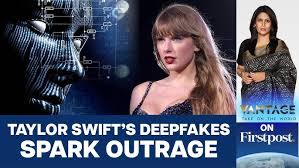Image Rights in the Era of Deepfakes and Generative AI
- @admin

- Aug 27
- 6 min read

At SOLO IP Management, we are all about safeguarding our clients and community members creative assets in a constantly changing digital landscape. But nothing has rattled the foundations of our field quite like the rise of generative AI and deepfake technology. The lines between creation and replication have blurred, presenting unprecedented challenges to our understanding of ownership, authorship, and identity. This isn't just a hypothetical problem; it's a daily reality, forcing us to re-evaluate how we protect our clients' most valuable assets: their image and reputation.
In this new era, the very concept of "image rights" has been put to the ultimate test. It’s no longer just about preventing the unauthorised use of a photograph. We’re now faced with the far more complex task of controlling digital replicas, voice clones, and synthetic personas that are so convincing they are nearly indistinguishable from reality. As IP managers, our role has shifted from defensive to proactive, as we work to protect against these new and insidious forms of infringement.
The Double-Edged Sword of Generative AI
The legal and ethical dilemmas posed by AI can be broken down into two core challenges, both of which are under intense legal scrutiny worldwide.
1. The Training Data Problem: The Great Scrape of the Internet
Most generative AI models are trained on massive datasets scraped from the internet, often without the explicit consent of the creators. These datasets are a colossal, indiscriminate collection of copyrighted works, personal data, and images. From a copyright perspective, this presents a fundamental question: does the act of "ingesting" copyrighted material to train an AI model constitute copyright infringement?
This issue is at the heart of numerous high-profile lawsuits. Artists, authors, and news publishers have sued AI companies like OpenAI and Microsoft, arguing that their training processes involve "impermissible copying." The defendants often argue that this use falls under "fair use," a legal doctrine that allows limited use of copyrighted material without permission. However, recent guidance from the U.S. Copyright Office has challenged this stance, clarifying that fair use may not apply when AI models generate outputs that directly compete with or substitute for original works.
This isn't just an abstract legal debate. The consequences are tangible. Artists are finding that AI models, trained on their unique styles, are generating new images that are then sold, siphoning away potential commissions and devaluing their human creativity. For a brand, this is a significant risk. If your AI-generated marketing campaign uses a style trained on a copyrighted artist’s work, you could be held liable for infringement, regardless of whether you were aware of the original source.
2. The Output Problem: Whose Persona Is It Anyway?
The second challenge arises from the outputs themselves. Deepfakes can create realistic images or videos that depict individuals doing or saying things they never did. This strikes at the heart of personal identity and image rights. We are not just dealing with intellectual property rights here; we are also navigating the murky waters of personality rights, defamation, and privacy.
The Right of Publicity is our primary legal tool in this fight. It’s the right of an individual to control the commercial use of their identity. While it has historically been used by celebrities to protect their brand—think of a famous actor's face on a billboard—it is now a crucial defense against deepfakes. The NO FAKES Act, currently under consideration in the U.S. Congress, aims to create a federal framework to protect against unauthorized "digital replicas."
This isn't just a concern for the rich and famous. As individuals build public personas on social media, their likeness and identity gain commercial value. A deepfake of an influencer falsely endorsing a product could cause significant financial and reputational damage. The legal landscape is still evolving, but courts in some jurisdictions, such as China, have already ruled that deepfaking by face-swapping is an infringement of an individual's image rights.
Key Cases and Real-World Examples
To understand the scale of this challenge, we must look at the cases that are shaping the legal precedent.
Thaler v. Perlmutter & the Copyrightability of AI
The case of Stephen Thaler and his AI system, DABUS, is a landmark example. Thaler, a computer scientist, attempted to register copyrights and patents for creations he claimed were autonomously generated by his AI. The U.S. Copyright Office and the courts consistently denied his applications, ruling that copyright law requires "human authorship." In a similar vein, the UK Supreme Court upheld rulings that rejected patent submissions for DABUS because they did not name a human inventor. This establishes a critical precedent: while human-assisted AI creations may be eligible for protection, works created solely by a machine are not. This is a crucial distinction for leaders: if your company's creative output is generated by AI, you must ensure there is sufficient human involvement in the creative process; through prompting, editing, or selection; to make it a copyrightable work.
The Right of Publicity in Action and The Bruce Willis Deepfake
A widely reported incident involving actor Bruce Willis highlighted the perils of deepfake technology. A deepfake of Willis appeared in a commercial for a Russian company, leading to widespread confusion about whether he had licensed his "digital twin." A representative for Willis later denied the claim, but the event underscored the ease with which a person’s likeness can be appropriated. While many celebrities have a high degree of control over their image, deepfakes challenge this by creating a synthetic persona that they cannot directly control. This is where the right of publicity becomes so vital, protecting against this unauthorised commercial use.
Trademark Infringement and Generative AI
While copyright and publicity rights often steal the spotlight, trademark law is also a critical consideration. Business leaders and creatives must be vigilant about the outputs of AI. A generative AI tool, trained on a vast amount of data, might inadvertently create a brand name, logo, or slogan that is identical or confusingly similar to an existing trademark. This is not just a theoretical risk. If a company uses an AI-generated logo that infringes on another business's trademark, they could face a costly lawsuit. This means the leadership must implement a new layer of diligence, using both human review and image searches to vet all AI-generated content before it is used commercially.
The Business's Playbook for Mitigating Risk in the AI Age
Given these challenges, how do business leaders, protect their organisations and teams? The strategy must be multi-pronged, combining legal awareness with practical operational safeguards.
1. Develop a Robust Internal Policy
The first step is to establish clear internal policies for the use of generative AI. This policy should cover:
Authorised AI Tools: Specify which AI platforms employees are permitted to use. The terms of service for different tools can vary dramatically, particularly concerning intellectual property rights.
Content Vetting: Mandate a review process for all AI-generated outputs. This should include checking for potential copyright or trademark infringement and ensuring content aligns with brand ethics and values.
Human Oversight: Emphasise the requirement for human involvement in the creative process to ensure outputs are eligible for copyright protection.
2. Review and Protect Your Existing IP
In this new environment, intellectual property is more valuable and vulnerable than ever.
IP Audit: Conduct a comprehensive audit of all your intellectual assets, including images, videos, and brand personas. Ensure all existing IP is properly protected through copyright registrations and trademark filings.
Proactive Monitoring: Use a combination of AI-powered tools and human surveillance to monitor for deepfakes and unauthorised use of your brand's name, logo, and key personnel's likeness. The goal is to detect infringement early and act decisively.
3. Engage with Legal and Technical Experts
The law is changing faster than ever, and a single internal team can't keep up with every development.
Legal Counsel: Work closely with legal counsel who specialise in AI and IP to stay informed about new legislation and court decisions. They can provide advice on everything from training data risks to licensing agreements for AI-generated content.
Tech Partners: Collaborate with your technology team to implement technical safeguards. This could include using platforms with indemnification clauses or exploring blockchain-based solutions to authenticate your digital assets.
4. Foster a Culture of Awareness
Finally, it's crucial to educate everyone in the organisation. Most people don't have a background in IP law and may not understand the risks associated with simply "Googling" an image or using an AI tool without permission. Regular training sessions can help them understand the importance of respecting others' intellectual property and the potential liabilities of misuse.
In conclusion, the era of deepfakes and AI is not just a technological revolution; it is a legal one. The once-clear boundaries of image rights, ownership, and authorship have been redrawn, and leadership in business are at the forefront of this new battle. By being proactive, leveraging existing laws, and staying informed, we can all navigate this complex landscape and protect the integrity and value of our digital assets.
The future of IP is here, and it demands our full attention and a robust, forward-looking strategy.








Comments